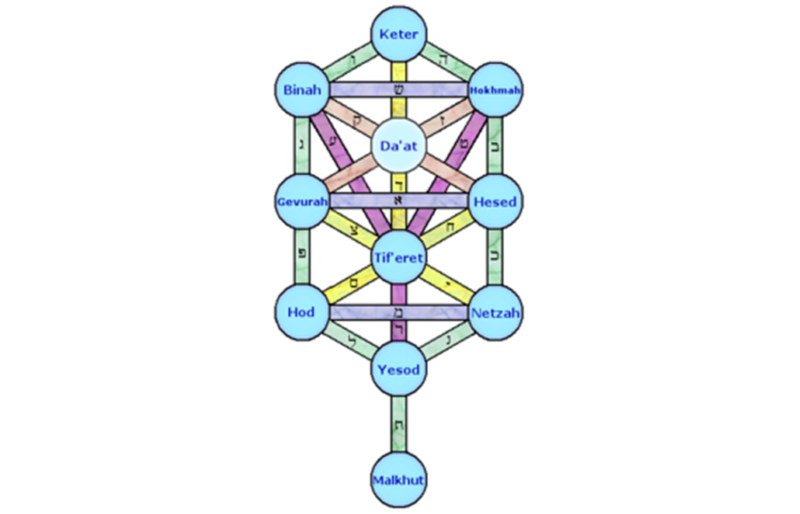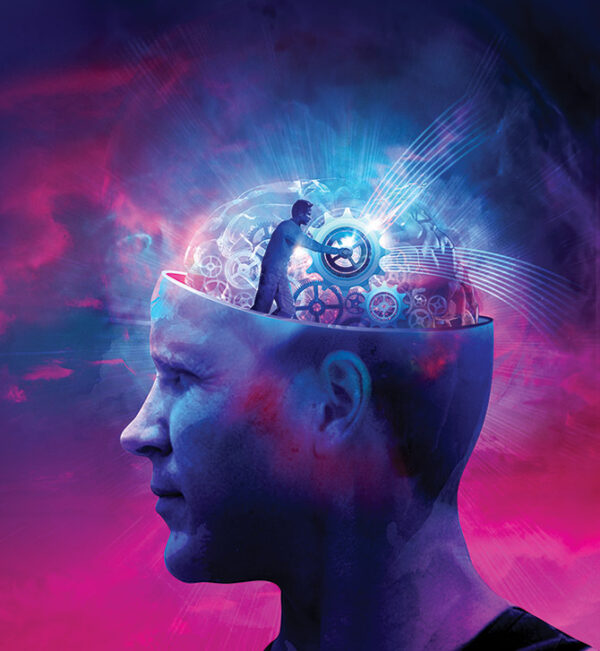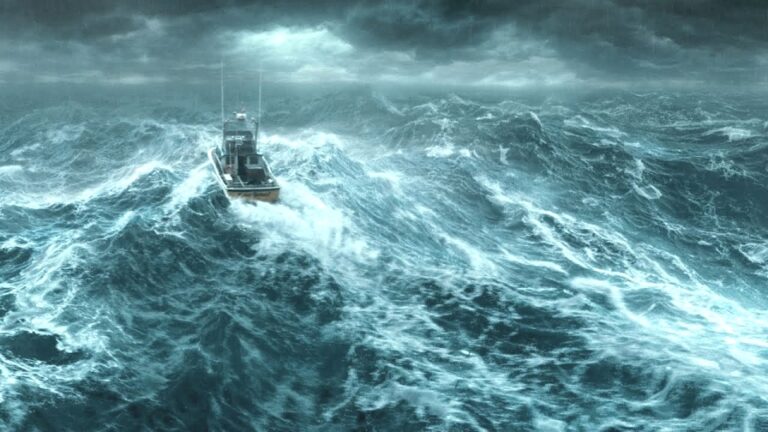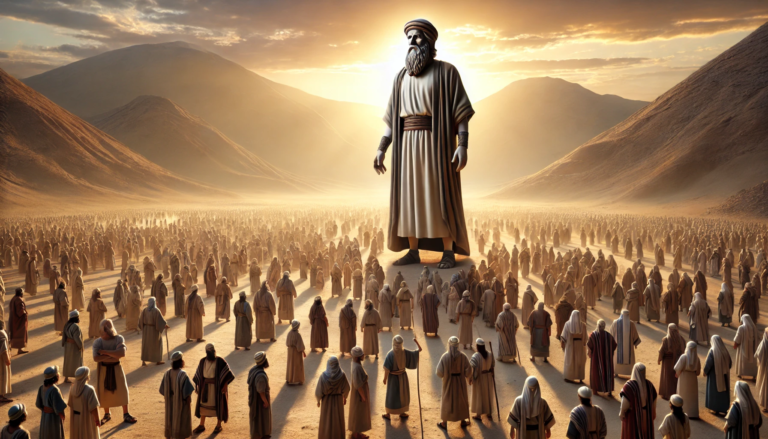Daat, Daat Everywhere and Not a Drop of Truth

Fake ice cream. Fake money. Fake friends. Fake free markets. Fake free speech. Fake education. Fake elections. Fake news. Even fake spirituality. Everything seems fake these days Why is this so? What happened to the real stuff? The truth is that what we are seeing in our world today is merely the revelation of the essence of our world from its foundation. Fakeness has always been at the root of our world. It is just that now, the fakeness has become so blatant and obvious that more people are starting to realize that things are not quite right.
So why is fakeness such a hallmark of our world?
In the beginning, Adam ha-Rishon [Primordial Man] was given a choice. He was told that he could eat from every tree in the garden including עֵץ הַחַיִּים (Tree of Life), with the exception of a single tree, עֵץ הַדַּעַת טוֹב וָרָע (Tree of Knowledge of Good and Evil). What was so terrible about eating from this tree?
To answer that question, we need to understand daat. What exactly is daat? It is usually translated as ‘knowledge’, but that’s not really what it is. Daat is the state or moment of intimacy [יחוד, yichud] between chochmah [חכמה] and binah [בינה]. Chochmah is supernal wisdom or knowledge which resides in the right side of the brain, whereas binah may be perceived as the heart or emotional understanding of that knowledge which resides in the left side of the brain. Chochmah deals with ‘information’ and is somewhat similar to a database of spiritual knowledge, whereas binah is the projection of that knowledge in order to make useful predictions of the future. Binah is associated with ‘intuition’ whereas chochmah is associated with ‘data.’ These are not all-encompassing definitions, but they do convey some of the fundamentals in simple terms. That being said, daat can be thought of as the moment of integration between right and left brains. Also, if chochmah deals with the past and binah with the future, then daat deals with the present, the here and now, the immediate. Further, all good character traits [מידות, middot] emerge out of daat. Without daat, there are no good middot. That is why daat is the ultimate treasure because if we ‘have it’ then we are equipped to handle the experiences of life and to respond effectively and properly to whatever happens; and if we don’t ‘have it’ we will end up ill-equipped for life and fall flat on our face the moment anything happens out of the ordinary or different from what we ‘wanted to happen.’ This is why we pray three times a day (Nusach Sefard): חָנֵּנוּ מֵאִתְּךָ חָכְמָה בִּינָה וָדָּעַת (Graciously give us from Yourself chochmah, binah and daat). We really need all three, but the key, the most valuable is daat which is why the prayer concludes: בָּרוּךְ אַתָּה יְיָ חוֹנֵן הַדָּעַת (Blessed are You Hashem, the Giver of daat).
Now that we can appreciate some of the basics about the nature of daat—its origins, its essence, and what emerges from it—then what is meant by the tree of daat tov v’ra? We just learned that daat is the moment of yichud between chochmah and binah. If daat is defined in this tree as a combination of good and evil, then it’s not really daat, is it? But the Torah calls it daat. So what is it? Simply put, it is fake daat. It’s a daat that masquerades as true daat, so much so that it even appears to integrate two apparently opposite ideas—good and evil—similar to how true daat integrates chochmah and binah.
Adam ha-Rishon was not just a historical figure that lived long ago, but rather the collective us who continues to live today. Therefore, it is insufficient to think of Adam ha-Rishon as ‘him’, as someone distinct from us. We are him. Therefore, to get closer to reality, let’s say the following: When we (you and I) were given the choice between eating from the eitz chaim (where true daat resides) and the eitz daat tov v’ra (where fake daat resides), why did you and I choose the fake version? Why would we make such a ‘ridiculous’ choice? Why did we choose fiction over reality?
We chose it because it was easy. The choice to eat from the eitz daat tov v’ra required no spiritual work, no submission to the will of our Creator, no acknowledgment that Hashem alone rules, no humility and no self-nullification. After Adam ha-Rishon ate from the forbidden fruit, Hashem asked him where he was. Let us read his response (Bereshit 3:10): וַיֹּאמֶר אֶת־קֹלְךָ שָׁמַעְתִּי בַּגָּן וָאִירָא כִּי־עֵירֹם אָנֹכִי וָאֵחָבֵא (And he said, I heard the sound of Your voice in the garden and I was afraid because I [anochi] was naked and I hid). He realized that there was absolutely nothing to him. He was completely void of mitzvot, with nothing to his credit or merit. His anochi was naked; the “I” or self of keter [crown] was empty. It wasn’t that he took off his keter voluntarily and gave it to Hashem in submission to His will. No, he held onto his keter and did nothing with it except to rebel against his Creator. In other words, he had acquired no chochmah and no binah. He did nothing to develop his mochin [מוחין, spiritual brains]. His mochin were non-existent. This is the deeper meaning of his nakedness.
So if the fake daat has no chochmah or binah behind it, then what does the Torah mean by saying it is a tree of daat tov v’ra? Where do the good and the evil come from that make up this daat? The prophet Yeshayah was given revelations that if understood properly would decimate the theological foundations of many religious systems. For example, he wrote (45:7): יוֹצֵר אוֹר וּבוֹרֵא חֹשֶׁךְ עֹשֶׂה שָׁלוֹם וּבוֹרֵא רָע אֲנִי יְיָ עֹשֶׂה כׇל־אֵלֶּה (I form light and create darkness. I make peace and create evil. I, Hashem, do all these). These words are so ‘disturbing’ that many English translations do not translate them properly, i.e. that Hashem creates evil. Instead they finesse the translation in one way or another to avoid the uncomfortable implications. Nevertheless, the fact is that Hashem takes credit for creating both light and darkness, good and bad. From Hashem’s point of view, everything is one. The distinction of deciding that one event is ‘good’ and another event is ‘evil’ or ‘bad’ is purely subjective, fictitious and artifactual. It only happens in our minds. There is no substance to it. It is just because we have been making these arbitrary distinctions since the garden that we think it must be right. And for the most part, we have been continuing in this same mode of confusion ever since.
It is well illustrated in the story of the Chinese farmer whose horse ran away. That very evening, all of his neighbors came around to commiserate. They said, “We are so sorry to hear your horse has run away. This is most unfortunate.” He said, “Maybe.” The next day the horse came back bringing seven wild horses with it, and in the evening everybody came back and said, “Oh, isn’t that lucky. What a great turn of events!” Again he said, “Maybe.” The following day his son tried to break one of the horses, and while riding it, he was thrown and broke his leg. The neighbors said, “Oh dear, that’s too bad,” and the farmer responded, “Maybe.” The next day the conscription officers came around to conscript people into the army, and they rejected his son because he had a broken leg. Again all the neighbors came around and said, “Isn’t that great!” Again, he simply said, “Maybe.”
So even though the halachah requires that when something ‘good’ happens we make the berachah בָּרוּךְ הַטּוֹב וְהַמֵּטִיב (Blessed is the One Who is good and Who does good) and when something ‘bad’ happens, we make the berachah בָּרוּךְ דַּיַּין הָאֱמֶת (Blessed is the True Judge), in the future during the Messianic Age, we will make the berachah בָּרוּךְ הַטּוֹב וְהַמֵּטִיב on the so-called ‘good’ and on the so-called ‘bad.’ Why? Because in reality, there is no such thing as ‘good’ and ‘bad’ events—they are both just subjective perceptions in our heads. When we will have access to the Hidden Light and our minds will have been purged of the poison from the Primordial Snake [נחש, Nachash], we will clearly see that everything is from Hashem and that everything is good.
This explains why the entire world is founded on an illusion. It’s built on a fake premise, i.e. that it is right and proper to label every event or situation, etc. as either ‘good’ or ‘bad.’ But really, all of it is just one big mirage that has produced nothing by misery, an image of reality as we think it to be. But be grateful for all the fakeness we are seeing, because the more obvious the fakeness becomes, the closer we are to experiencing the revelation of truth—chochmah, binah and real daat. But you don’t need to wait. You can make it your reality even now. It’s your decision.






